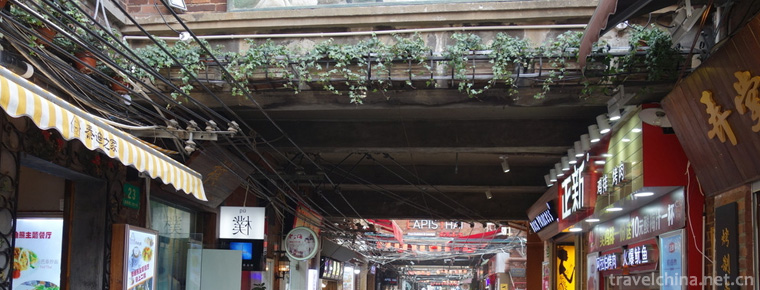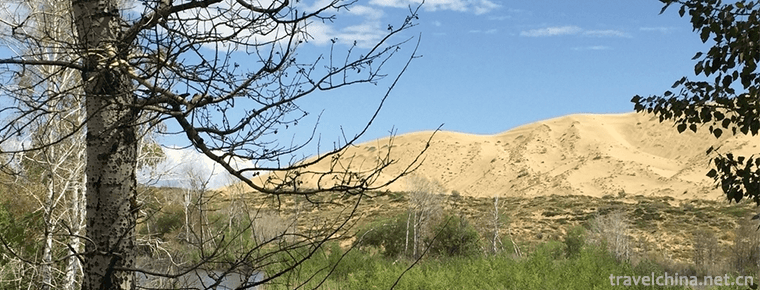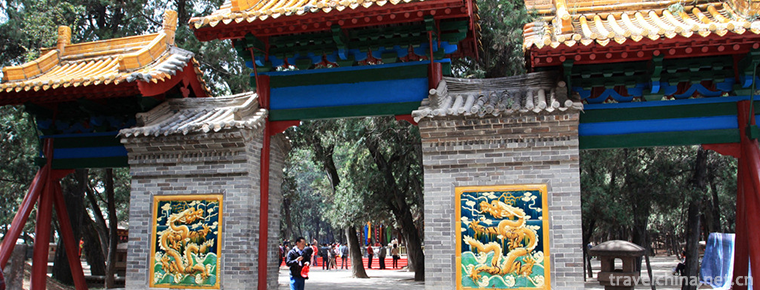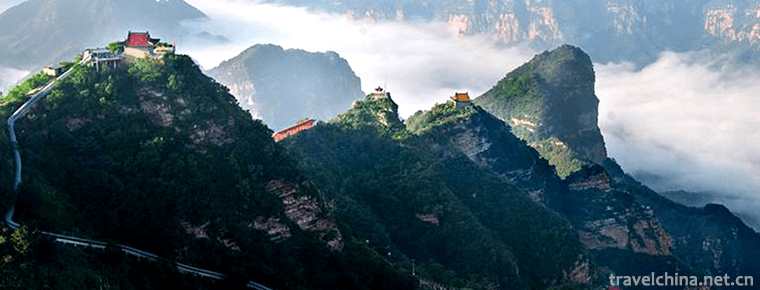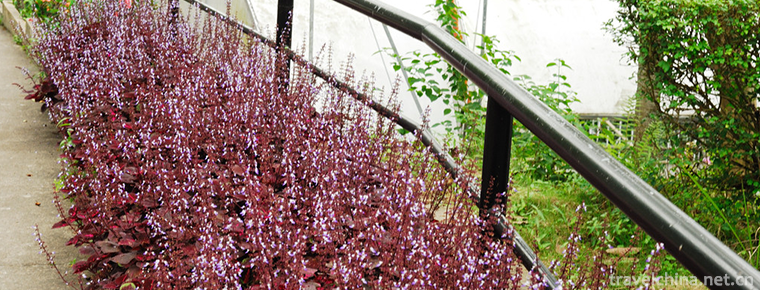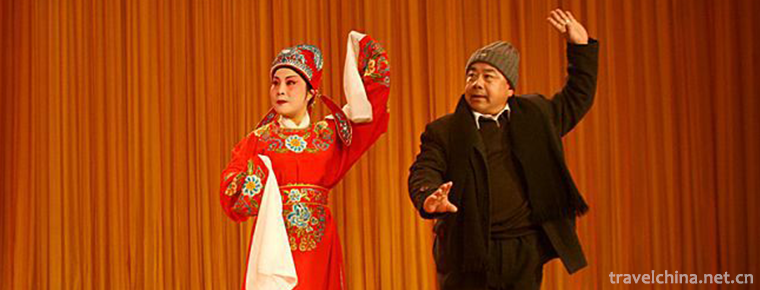Yongxiu Yaya Opera
Yongxiu Yaya Opera
Yongxiu Yaya Opera, a local traditional drama in Yongxiu County, Jiangxi Province, is one of the national intangible cultural heritage.
Yongxiu Ya Opera originated in Wu Town, one of the four famous towns in Jiangxi Province. It was born in the late Ming Dynasty and Ganbei Bench Opera. Because all of its female characters were played by boys and girls, and their heads were pierced with two maids'manes, it gradually became a school of its own and was called Yongxiu Ya Opera. Its artistic characteristics lie in the simple form of percussion accompaniment; the singing style follows the characteristics of traditional folk operas, most of which are adapted from traditional operas; the language has the characteristics of typical Gan dialect, and most of them are vernacular.
On November 11, 2014, Yongxiu Yaya Opera was approved by the State Council of the People's Republic of China to be listed in the fourth batch of representative projects of national intangible cultural heritage, numbered IV-161.
historical origin
Origin and development to flourishing stage
Late Ming and early Qing Dynasty - New China was founded. "Yaya Opera" can be traced back to the late Ming Dynasty, and its initial form is "Bench Opera". That is, sitting on the bench and singing, with no action performance, no makeup or costume. It is too close to life and lacks artistic beauty. For a long time, this form can not meet the audience's aesthetic needs. Therefore, a series of improvements have been made to the "Yaya Opera". The improved "Yaya Opera" is deeply loved by businessmen. At this time, businessmen also invited their home folk music, local operas and other concerts to Wucheng to perform. At the end of the Qing Dynasty and the beginning of the Republic of China, the "Yaya Opera" group developed rapidly. Every village in Yongxiu has its own "Yaya Opera" group. It not only performs continuously on holidays, but also plays an important part in people's entertainment in their leisure time. At the beginning of the Republic of China, the troupe and repertoire of "Yaya Opera" also developed into a considerable scale. There were as many as four or fifty troupes, and about sixty or seventy plays were sung.
From prosperity to decline
The founding of New China - the end of 1970s. After liberation, "Yaya Opera" was an unprecedented grand occasion. According to records, a performance in 1958 mobilized more than 200 of the county's best actors. At that time, "Yaya Opera" became the most popular opera among farmers in the county, almost reaching the grand occasion of having actors at home and theatrical troupes in villages and villages. During the "Cultural Revolution", local opera groups were disbanded, artistic talents and artistic activities were destroyed, impacted and disturbed. Instead, they were mostly eulogized to the Party and leaders, the motherland and the collective, heroes and examples, revolutionary enthusiasm, solidarity and mutual assistance, the situation of the military and civilian fishes, and so on. ” It is very difficult to see local operas, "Yaya Opera" is no exception.
Gradually rise to prosperity
Since the early 1980s. After the Third Plenary Session of the CPC Central Committee, the theatre troupes gradually recovered, but the scale of the troupes was reduced from 450 to 120. In order to protect this endangered local opera, Yongxiu County Committee and the county government began to list Yaya Opera as the intangible cultural heritage at the county level, and then it was included in the list of the intangible cultural heritage at the municipal level. Until 2014, it successfully applied to become the national intangible cultural heritage.
Cultural characteristics
Accompaniment Form
Yongxiu Yaya Opera is accompanied by percussion music, which is different from other operas. The accompaniment instruments of Yaya Opera are percussion music, namely small drums, big drums, small gongs, big gongs and cymbals. Later, Yungong, bass gongs and lobby drums were added according to the plot and characters'needs. Before the performance, the opening is to beat gongs and drums, which is used to create atmosphere. The opening rhythm of gongs and drums is very simple. Only 16-minute notes are used repeatedly: thud, thud, thud, and eight-minute notes: thud.
Music for voices in a Chinese Opera
Yongxiu Yaya Opera's singing style follows the characteristics of traditional folk operas, and the repertoire is mostly adapted from the traditional repertoire. The repertoire form of "Yaya Opera" was originally a single-track, multi-purpose, multi-track and universal form for men and women. Later, it gradually evolved into a monotonous and monotonous form for men and women. Its format is very rich, such as sigh board, tragic board, soul-restoring board, plain words, rigid board, flower tune, minor and so on, and most of them are adapted on the basis of traditional dramas, such as: plain words "Sanbao Ji" in "I will meet you into the Great Dynasty", "Three Girls Tu" in "My husband will not recognize me", sigh board "Fang Qing Opera aunt" in "Fang Qing opera aunt". Xiao Fang Qing's Sleep in Garden Dream, Liang Shanbo and Zhu Yingtai's "This Time I Can't Return", Sanbao Ji of Return Soul Board, Blind Eyes of Swearing Jin Tong in Jinlian Tea Delivery, Taohua Ling's "I Meet Taohua Ling" in Huaqiang and "Waiting for Three Days" in Fang Qing's "Drama Gu" Afterwards, you will be reunited and "Tao" in the minor "Selling Cotton" and so on. Quarter: drum; dichotomy: drum. When performing, most of the time stays on the singing tune, gongs and drums are singing in response to the sound of gongs and drums, or after singing drag tune, gongs and drums can not overlap with the singing tune. The whole performance process emphasizes the singing of the tune, light accompaniment, and sometimes the accompaniment of musical instruments is only used to embellish the whole program. Therefore, the accompaniment of gongs and drums in Yaya Opera has always been in a foil position.
Language characteristics
The language of Yongxiu Ya Opera has typical characteristics of Gan dialect, and it is mostly vernacular. The main aria and pronunciation of Yaya Opera are Yongxiu local dialect. The melody's rise and fall are closely related to the local dialect. In the singing process, local color words such as "Ai, Ai, La, Ya" are added, such as the Lyric "Nujia Ben Name Tao" in "Selling Cotton" section, "Nujia Ben Name Tao", "Nujia (ah) Ben Name Tao" in "Selling Cotton".( "Hey" (Eh-ho); "Come out and make a decision" in "Liang Shanbo and Zhu Yingtai" and "I (ah) are beautiful to talk about, water (ho) in the countryside (ah)"; and "Men (that) in"Wujin Ji"in"Gate of Bamboo Festival Height"and"Wujin Ji"in"Gate of Bamboo Festival Height" Bamboo (Hey) Festival (Hey) Festival (Hey) Festival (Diligence) High (Wow), Mad (Ya) Wind disperses (Hey) Purple (Hey) Robe (Hey) Watch (Hey) Home (Where) Township) and so on. These linings are commonly used by local people when speaking, and the audience sounds particularly fresh and cordial.
Representational repertoire
Yaya Opera has dozens of existing scripts, including "Seven Floors" and "Huang Po Jing", which have been handed down and preserved for generations. There are also more than 40 plays such as "Three Girls worship their birthday", "Da Qing Guan", "Embroidered Shoes", "Baihua Pavilion", "Pipa", "Sanbao Ji", "Jieshizhong" and "Seven Floors Tower". Other original plays include "Taohua Ling" and "Blind Zi Zi". Fortune-telling, mustard abandonment, flower-son house, etc. more than 20.
Inheritance and Protection
Inheritance value
Yaya Opera originated from Bench Opera in Northern Jiangxi Province in the late Ming Dynasty. It is mainly accompanied by beating. Its singing tone and pronunciation are all local dialects. It is loved by local people for its melodious and melodious singing, lively performance. It not only carries a rich connotation of history and folk culture, but also has a very high value of history, scientific research, culture and art.
Current situation of inheritance
With the constant impact of market economy and the constant change of people's aesthetic taste, the "Yaya Opera" troupe has decreased from the original four or fifty to more than ten now, namely, the Yijiacun Opera Troupe of Qijin, the Xiashan Opera Troupe of Qijin, the Baichai Longjing Opera Troupe, the Huangling Opera Troupe of Sanxiqiao, the Shangfang Opera Troupe of Matan and the Baotian Opera Troupe. Mazhoucun Opera Troupe and so on. There are more than ten troupes, more than twenty troupes and only a few others. Most of the theatre troupes survive and die. Only the Yejiacun Opera Troupe in Qiujin, Xiashan Opera Troupe in Qiujin and Longjing Opera Troupe in Baichai are active. Almost all the other troupes are idle.
Heritage figures
Zhou Wenbin, male. In May 2018, Zhou Wenbin was selected as the representative successor of the fifth batch of national intangible cultural heritage projects, Yongxiu County, Jiangxi Province. Project name: Yongxiu Yaya Opera.
protective measures
In order to inherit and carry forward this precious regional culture, Yongxiu government departments have been working hard over the years. A leading group of county intangible cultural heritage has been set up to organize special working groups, formulate protection plans and allocate special funds to rescue the endangered Yaya Opera. It also organizes people to visit old artists, collect valuable information such as lyrics and music scores of Yaya Opera extensively, and absorb folk artists of Yaya Opera to work in township cultural stations to encourage them to take apprenticeships to teach art.
social influence
Important activities
In the Spring Festival Gala of Yongxiu County in 2018, Yaya Opera "Ancient Rhyme New Singing" has won the enthusiastic pursuit of the audience with its strong local characteristics and vivid and lively forms of expression. It has become a normal practice for local cultural departments to hold performances of Yaya Opera and cultural and art festivals during holidays and leisure time. Such measures not only prosper rural culture, but also expand the influence of Yaya Opera.
From April 23 to April 27, 2018, an advanced seminar on intangible cultural heritage protection in Jiangxi Province was successfully held in Nanchang, sponsored by the Department of Human Resources and Social Security of Jiangxi Province, Jiangxi Research and Protection Center for intangible cultural heritage and Nanchang Cultural Museum (Nanchang Research and Protection Center for intangible cultural heritage). The seminar was successfully held in Nanchang, and the national level was not. The representative project Yongxiu Yaya Opera participated in the exchange of non-heritage exhibitions.
In August 2018, in order to implement the spirit of the Nineteenth National Congress of the Communist Party of China, the Law of the People's Republic of China on Non-material Cultural Heritage and the Regulations of Jiangxi Province on Non-material Cultural Heritage, commemorate the fortieth anniversary of reform and opening up, display the achievements of the protection of non-material cultural heritage in Jiangxi Po, establish a database of excellent projects for foreign exchange, and hold traditional performances throughout Jiangxi Art Intangible Cultural Heritage Exhibition City special event, in Jiujiang, Yongxiu Yaya Opera debut.


-
Tianzifang
Tianzifang is located in lane 210, Taikang Road, Shanghai, China.
Views: 174 Time 2018-10-12 -
Baisha Lake Scenic Area
Baishahu Lake is one of the important scenic spots in Qianli Gallery in Altay, Xinjiang. It is 100 kilometers from Habahe County, 260 kilometers from Altay Airport, 150 kilometers from Kanas Airport.
Views: 138 Time 2018-12-12 -
Huangdi Mausoleum Scenic Area
Huangdi Mausoleum is the tomb of Xuanyuan Huangdi, the ancestor of the Chinese nation. It is the only Huangdi Mausoleum recorded in Historical Records..
Views: 152 Time 2018-12-12 -
Jiulian mountain
Jiulianshan Scenic Spot is located in Songshuping Village, Shangbali Town, Huixian City, Xinxiang City, Henan Province. It belongs to the south foot of Taihang Mountain.
Views: 177 Time 2018-12-22 -
Yongji Ecological Park
Yongji Eco-Park is located in Daling Town, Huidong County, Huizhou City, Guangdong Province. It covers an area of about 1300 mu. It was solely invested and constructed by Hong Kong Yongji Food Group i.
Views: 427 Time 2019-03-05 -
Pulangorgozi
Pulangorgozi, also known as "fruit harmony", is a kind of self-entertaining dance, which originates from Pulan County and is widely spread in Ali countryside. It is a kind of hand in hand, s.
Views: 246 Time 2019-06-09 -
Yihuang Opera
Yihuang Opera, formerly known as Yihuang Ban and Yihuang Diao, is one of the national intangible cultural heritage in Yihuang, Nancheng, Nanfeng and Guangchang counties of Jiangxi Province, as well as.
Views: 333 Time 2019-07-12 -
Social undertakings in Mianyang
In 2018, Mianyang City applied for provincial science and technology projects and implemented 132 million yuan of free funds. There are 272 high-tech enterprises in the city, including 5 national engineering technology research centers and 19 provincial.
Views: 130 Time 2020-12-14 -
Leshan scenic spot
As of 2018, Leshan City has 3 world-class heritages, 10 national key cultural relics protection units, 4 national intangible cultural heritages, 3 national scenic spots, 2 nature reserves and wetland parks, 3 National Forest Parks, 1 National Geological Park and 1 Mining.
Views: 328 Time 2020-12-17 -
Climate of Nanchong
Nanchong belongs to the subtropical humid monsoon climate. Compared with the Yangtze River Valley in the south of the basin, the temperature is relatively low, the rainy season is longer and the rainstorm is more. Compared with the Western Sichuan plain.
Views: 266 Time 2020-12-17 -
Dazhou hydrology
The rivers in Dazhou city mainly belong to the Jialing River water system, which is a tributary of the Yangtze River. It originates from Daba Mountain and distributes in the form of branches from north to south. Qianhe River, Zhonghe River and Houhe Riv.
Views: 170 Time 2020-12-20
